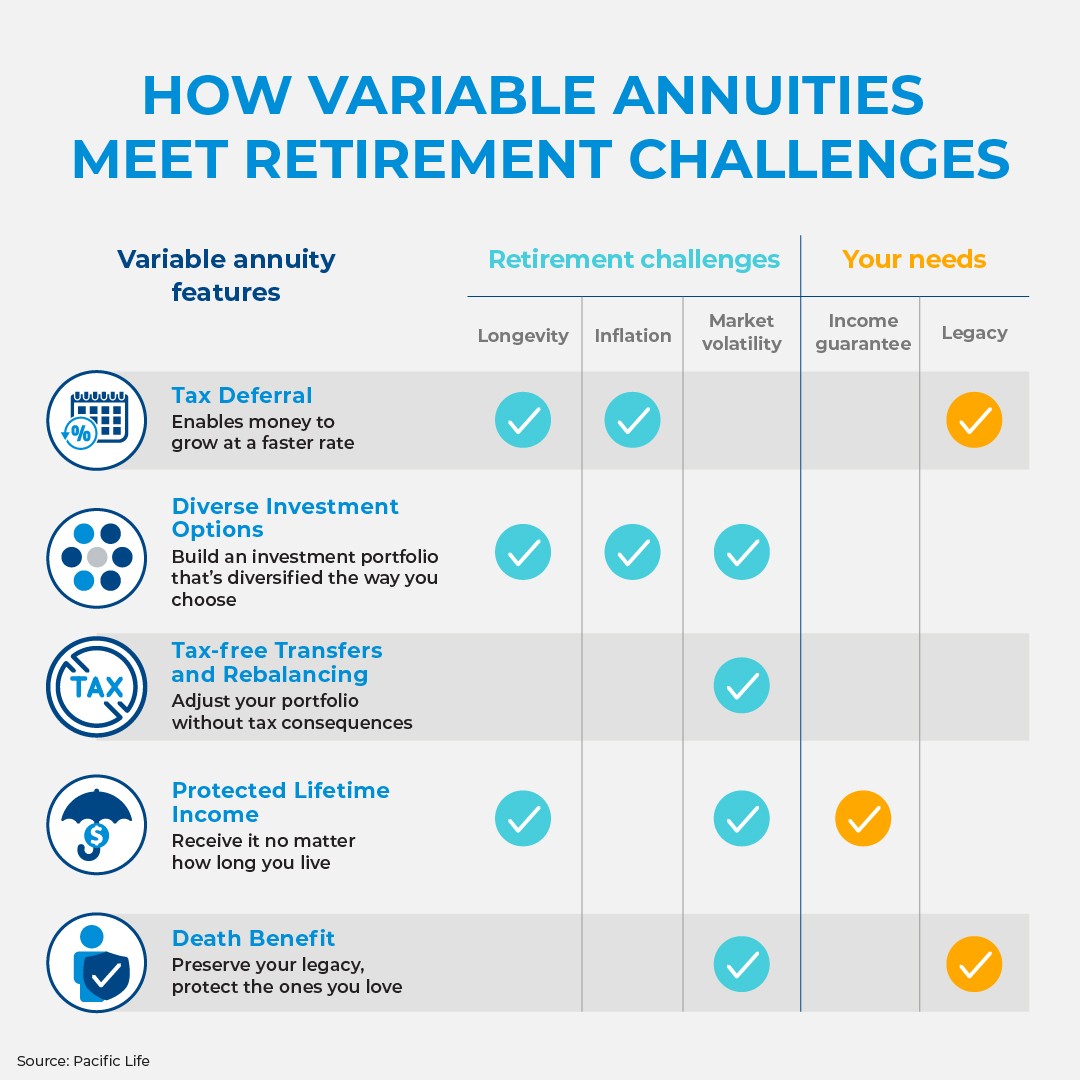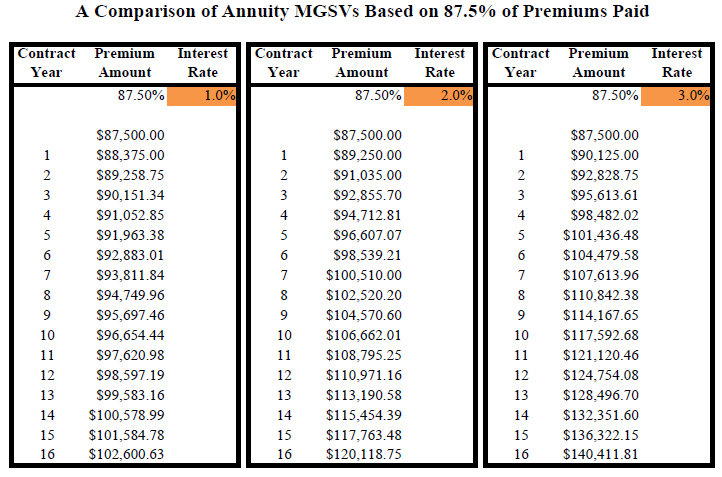All Categories
Featured
Table of Contents
The payment may be invested for development for a long duration of timea solitary costs postponed annuityor spent momentarily, after which payment beginsa single costs instant annuity. Single premium annuities are often moneyed by rollovers or from the sale of a valued asset. An adaptable premium annuity is an annuity that is meant to be funded by a collection of payments.
Proprietors of taken care of annuities understand at the time of their purchase what the value of the future capital will certainly be that are generated by the annuity. Certainly, the variety of capital can not be understood beforehand (as this relies on the contract owner's life expectancy), however the guaranteed, repaired interest rate at least provides the owner some level of certainty of future revenue from the annuity.
While this distinction seems easy and simple, it can dramatically affect the worth that a contract owner inevitably derives from his/her annuity, and it produces significant unpredictability for the agreement proprietor - Retirement savings with annuities. It also generally has a product effect on the level of charges that an agreement proprietor pays to the providing insurer
Fixed annuities are often made use of by older investors who have restricted possessions but who desire to offset the threat of outliving their assets. Set annuities can serve as an efficient tool for this purpose, though not without certain drawbacks. For instance, in the situation of immediate annuities, once an agreement has been purchased, the agreement owner relinquishes any and all control over the annuity assets.
Highlighting Retirement Income Fixed Vs Variable Annuity Everything You Need to Know About Financial Strategies What Is Variable Annuity Vs Fixed Annuity? Features of Fixed Income Annuity Vs Variable Annuity Why Choosing the Right Financial Strategy Is a Smart Choice Fixed Income Annuity Vs Variable Annuity: Simplified Key Differences Between Different Financial Strategies Understanding the Risks of Long-Term Investments Who Should Consider Strategic Financial Planning? Tips for Choosing the Best Investment Strategy FAQs About Planning Your Financial Future Common Mistakes to Avoid When Planning Your Retirement Financial Planning Simplified: Understanding What Is Variable Annuity Vs Fixed Annuity A Beginner’s Guide to Variable Annuities Vs Fixed Annuities A Closer Look at What Is Variable Annuity Vs Fixed Annuity
For instance, an agreement with a common 10-year surrender period would certainly bill a 10% surrender charge if the contract was surrendered in the first year, a 9% abandonment fee in the 2nd year, and more till the abandonment fee reaches 0% in the contract's 11th year. Some delayed annuity agreements include language that permits little withdrawals to be made at numerous periods during the abandonment period scot-free, though these allocations generally come at a price in the type of reduced surefire passion rates.
Just as with a repaired annuity, the owner of a variable annuity pays an insurance provider a round figure or collection of settlements in exchange for the assurance of a series of future payments in return. As stated above, while a taken care of annuity expands at an assured, constant price, a variable annuity expands at a variable price that depends upon the efficiency of the underlying investments, called sub-accounts.
Throughout the buildup phase, properties spent in variable annuity sub-accounts grow on a tax-deferred basis and are tired only when the agreement owner withdraws those revenues from the account. After the buildup stage comes the income phase. With time, variable annuity assets need to theoretically enhance in worth until the agreement owner chooses he or she wish to begin withdrawing cash from the account.
One of the most significant problem that variable annuities generally existing is high cost. Variable annuities have a number of layers of charges and expenses that can, in aggregate, develop a drag of up to 3-4% of the agreement's worth each year. Below are the most typical fees connected with variable annuities. This expenditure makes up the insurance firm for the danger that it assumes under the terms of the agreement.
M&E expenditure fees are computed as a portion of the contract value Annuity companies pass on recordkeeping and various other administrative costs to the agreement proprietor. This can be in the type of a level yearly charge or a percentage of the contract worth. Management costs may be included as component of the M&E danger charge or might be examined independently.
These charges can range from 0.1% for passive funds to 1.5% or more for proactively taken care of funds. Annuity contracts can be tailored in a number of ways to serve the certain requirements of the contract owner. Some typical variable annuity bikers include guaranteed minimal buildup advantage (GMAB), guaranteed minimum withdrawal advantage (GMWB), and guaranteed minimum revenue advantage (GMIB).
Exploring the Basics of Retirement Options Key Insights on Your Financial Future What Is the Best Retirement Option? Advantages and Disadvantages of Retirement Income Fixed Vs Variable Annuity Why Variable Annuity Vs Fixed Annuity Is Worth Considering Fixed Vs Variable Annuity Pros Cons: How It Works Key Differences Between Different Financial Strategies Understanding the Rewards of Annuity Fixed Vs Variable Who Should Consider Strategic Financial Planning? Tips for Choosing the Best Investment Strategy FAQs About Planning Your Financial Future Common Mistakes to Avoid When Choosing a Financial Strategy Financial Planning Simplified: Understanding Your Options A Beginner’s Guide to Smart Investment Decisions A Closer Look at Retirement Income Fixed Vs Variable Annuity
Variable annuity payments supply no such tax reduction. Variable annuities tend to be extremely ineffective lorries for passing wide range to the future generation due to the fact that they do not appreciate a cost-basis adjustment when the original agreement owner dies. When the owner of a taxable financial investment account dies, the cost bases of the financial investments kept in the account are changed to mirror the market prices of those investments at the time of the proprietor's fatality.
Consequently, beneficiaries can inherit a taxable investment portfolio with a "clean slate" from a tax obligation viewpoint. Such is not the case with variable annuities. Investments held within a variable annuity do not get a cost-basis adjustment when the original proprietor of the annuity passes away. This means that any type of built up unrealized gains will be passed on to the annuity proprietor's successors, along with the linked tax obligation problem.

One significant issue connected to variable annuities is the capacity for problems of interest that may exist on the part of annuity salespeople. Unlike a financial expert, that has a fiduciary duty to make investment decisions that benefit the customer, an insurance policy broker has no such fiduciary obligation. Annuity sales are very profitable for the insurance coverage experts who market them since of high ahead of time sales payments.
Numerous variable annuity agreements consist of language which places a cap on the percent of gain that can be experienced by specific sub-accounts. These caps prevent the annuity owner from fully participating in a portion of gains that might or else be enjoyed in years in which markets produce substantial returns. From an outsider's viewpoint, presumably that capitalists are trading a cap on investment returns for the aforementioned assured flooring on financial investment returns.
Breaking Down Your Investment Choices Key Insights on Fixed Interest Annuity Vs Variable Investment Annuity Defining the Right Financial Strategy Benefits of Choosing the Right Financial Plan Why Choosing the Right Financial Strategy Can Impact Your Future How to Compare Different Investment Plans: Explained in Detail Key Differences Between Different Financial Strategies Understanding the Rewards of Long-Term Investments Who Should Consider Strategic Financial Planning? Tips for Choosing the Best Investment Strategy FAQs About Planning Your Financial Future Common Mistakes to Avoid When Choosing Choosing Between Fixed Annuity And Variable Annuity Financial Planning Simplified: Understanding Your Options A Beginner’s Guide to Immediate Fixed Annuity Vs Variable Annuity A Closer Look at Fixed Interest Annuity Vs Variable Investment Annuity
As kept in mind above, give up costs can severely limit an annuity proprietor's capacity to relocate assets out of an annuity in the very early years of the contract. Better, while the majority of variable annuities allow contract owners to take out a defined amount throughout the build-up phase, withdrawals yet amount normally lead to a company-imposed fee.
Withdrawals made from a fixed rates of interest financial investment option can also experience a "market value change" or MVA. An MVA readjusts the worth of the withdrawal to show any changes in rate of interest from the time that the money was bought the fixed-rate choice to the moment that it was taken out.

Frequently, even the salesmen that sell them do not completely recognize just how they work, and so salespeople often prey on a customer's emotions to sell variable annuities instead of the benefits and suitability of the products themselves. Our team believe that financiers must completely comprehend what they have and just how much they are paying to have it.
The same can not be stated for variable annuity possessions held in fixed-rate financial investments. These properties legitimately come from the insurance firm and would certainly as a result be at risk if the business were to fail. Likewise, any type of warranties that the insurer has actually accepted provide, such as a guaranteed minimum earnings benefit, would be in question in the occasion of an organization failure.
Breaking Down Fixed Vs Variable Annuity Pros And Cons Everything You Need to Know About What Is A Variable Annuity Vs A Fixed Annuity Defining Variable Annuity Vs Fixed Annuity Advantages and Disadvantages of Different Retirement Plans Why Choosing the Right Financial Strategy Matters for Retirement Planning Deferred Annuity Vs Variable Annuity: Explained in Detail Key Differences Between Fixed Vs Variable Annuity Pros Cons Understanding the Risks of Long-Term Investments Who Should Consider Strategic Financial Planning? Tips for Choosing the Best Investment Strategy FAQs About Fixed Indexed Annuity Vs Market-variable Annuity Common Mistakes to Avoid When Planning Your Retirement Financial Planning Simplified: Understanding Your Options A Beginner’s Guide to Variable Vs Fixed Annuities A Closer Look at How to Build a Retirement Plan
Prospective buyers of variable annuities need to understand and take into consideration the financial condition of the providing insurance policy business before entering into an annuity agreement. While the benefits and downsides of different types of annuities can be debated, the actual concern surrounding annuities is that of suitability.
As the saying goes: "Purchaser beware!" This short article is prepared by Pekin Hardy Strauss, Inc. ("Pekin Hardy," dba Pekin Hardy Strauss Wide Range Monitoring) for informative objectives just and is not meant as an offer or solicitation for service. The information and data in this post does not make up legal, tax, audit, investment, or various other specialist suggestions.
Table of Contents
Latest Posts
Analyzing Strategic Retirement Planning A Closer Look at How Retirement Planning Works What Is Variable Annuities Vs Fixed Annuities? Features of Variable Annuity Vs Fixed Indexed Annuity Why Fixed In
Best Annuities For Retirees
Exploring Indexed Annuity Vs Fixed Annuity Everything You Need to Know About Fixed Vs Variable Annuity What Is the Best Retirement Option? Advantages and Disadvantages of Fixed Vs Variable Annuity Pro
More